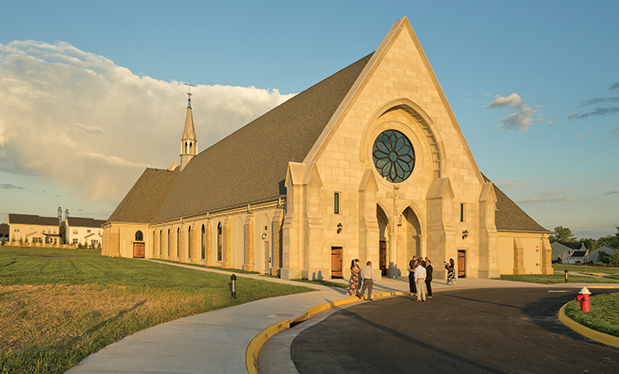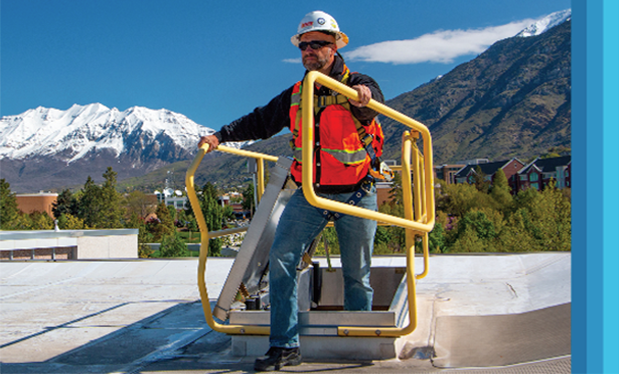We have lost our appetite for underwriting roofing projects where torches are used.”
This was CNA’s bottom line when meeting with NRCA in 2002. CNA representatives were concerned about the upward trend of annual fire-related claims related to torch-applied roof systems; the $14 million in losses were proving too rich for CNA’s appetite. But after many discussions, CNA was willing to apply a risk management approach to the roofing industry’s need for insurance coverage for the popular roof system application process. NRCA was asked to devise a plan to present to CNA’s leadership.
The challenge
Creating such a plan was a significant request and test of the then 22-year NRCA-CNA partnership.
To start, NRCA reached out to the Midwest Roofing Contractors Association, which already had a certified roofing torch-applicator program known as CERTA, and asked MRCA to form a partnership to create a national program. MRCA agreed, but at the time, there only were a few trainers qualified to teach the MRCA CERTA class, so finding a way to build a cadre of trainers was key to train a significant number of torch applicators.
Luckily, NRCA had been awarded OSHA training grants for various subjects. The most recent grant awarded was for creating a train-the-trainer safety program. The grant helped make development of a torch-specific, train-the-trainer program a natural fit. Instructors who passed the CERTA trainer course would be authorized to teach applicators using what would become the revised CERTA program. Successful trainers and applicators would receive cards that reflected trainers’ and applicators’ accomplishments and were valid for three years (after which reauthorization or recertification would be required).
NRCA’s presentation to CNA was well-received, and CNA gave NRCA one year to develop and implement the CERTA program by 2003. In addition, CNA changed its underwriting guidelines so an insured contracting company that had a torch-related claim would be covered for that loss only if the roofing worker using the torch had earned his or her CERTA applicator card. The requirement added a significant incentive for CNA-insured contracting companies that installed torch-applied roofing material to train their field workers in CERTA practices.
In 2004, NRCA began offering its CERTA Train-the-trainer 10-hour class. Classes were well-attended, and newly authorized trainers were teaching field roofing workers at a significant pace. More important, insurance claims and claim dollars were halved. On average, this downward trend continued, and torch-related losses stabilized to an acceptable level.
As the claims experience news spread, more non-CNA insured contractors sent employees to the train-the-trainer program. CNA’s trust in NRCA’s assertion that awareness training would address the issue paid off not only for its book of business but also the industry at large.
A second challenge
Part of the NRCA/MRCA CERTA program included developing best practices for torch-applied roof system installation.
and safety. These practices provide guidance for applying roof membranes safely and inspecting roofs properly to mitigate fires. However, by 2007, it became evident when torch-applied flashings installed via the commonly used torch-and-flop method weren’t always the right choice for proper adhesion. Members of NRCA’s technical and safety committees met with representatives of some of the affected manufacturers to address the issue, which resulted in a recommendation to revise CERTA’s best practices.
Research was performed on torch heat transfer through various roofing products and showed how well other products served as thermal barriers. Armed with these results, CNA agreed to update the best practices to add cold adhesives; mop applying hot bitumen; and direct torching (using a single burner, low-output [105k Btu or less] “detail” torch with specified instructions for combustible and noncombustible substrates) to the torch-and-flop option. The addition of these options improved the program, highlighting the importance of working together with manufacturers and technical committees as complications emerge.
Risk management
As the years progressed, claims and dollar values continued downward. When losses occurred, they were subjected to scrutiny to ascertain program viability and whether further changes were needed. However, when a high-profile loss occurred, such as the loss of a historical building, it was not unusual for the incident to cause a greater level of scrutiny and analysis of processes and protocols.
This was the case in 2018 when a spate of costly, high-profile fires occurred as a result of torch applying polymer-modified bitumen directly to combustible roof decks. Consequently, the 2019 volume of The NRCA Roofing Manual no longer recommends the use of torches over combustible decks because of the inherent fire risk.
Although certain aspects of the CERTA program historically aligned with and refer to NRCA recommendations, this change brought attention to the unique space CERTA occupies between the safety and technical realms. During all the years I have been a part of roof safety discussions, never has one set of safety practices overlapped so significantly with the viability of roof system performance as CERTA.
It is because of this unique overlap that subsequent intense discussions occurred about how the CERTA program addresses the desire to eliminate fires while acknowledging torch-applied polymer-modified bitumen roof systems over combustible decks are not only an insurable risk but also being installed regularly throughout the U.S.
This type of tension isn’t new to the roofing industry. The industry always has had the challenge of figuring out how to do its work accurately and safely. It is no small feat, and, for example, though it might make sense from a safety standpoint to require every roof to have proper anchors installed for fall protection, this isn’t a practical reality. As a result, we must have alternative fall-protection methods and procedures available to accommodate the uniqueness of the roof and system being installed. The industry continually examines ways to do its work while minimizing if not eliminating risks. Often, that requires looking at solving problems from different perspectives.
Such was the case with torching to combustible roof decks. Although it is appropriate for CERTA to forbid torching directly to such decks, it is important to recognize there are ways to greatly minimize if not eliminate a fire via certain work practices when torching over a combustible deck.
Armed with the challenge of how to approach good risk assessment and management, NRCA’s Health and Safety and Technical Operations committees went to work.
The result is a thoughtful risk management hierarchy of controls-type response.
The first control is to see whether the hazard can be eliminated. NRCA committee members agreed CERTA no longer will permit torching to occur directly to combustible decks under any circumstance.
The second control is substitution. NRCA encourages contractors faced with a specification or owner request to install a polymer-modified bitumen roof system over a combustible deck to consider alternative applications. If a specifier or customer will not agree to other options, the contractor should consider a control designed to reduce the fire hazard by enhanced protections for the combustible substrate. NRCA committee members devised several protocols that essentially render a combustible deck noncombustible and ready to accept a torch-applied membrane. In addition, there are personal protective equipment, fire watches and other protocols to keep workers and buildings safe.
A continued success
Over the years, the CERTA program has successfully addressed the inherent risk of open flames on roofs. And a major success has been how those responsible for the program’s integrity have worked to find solutions to the succession of challenges the program faced.
TOM SHANAHAN, CAE, is NRCA’s vice president of enterprise risk management and executive education.



